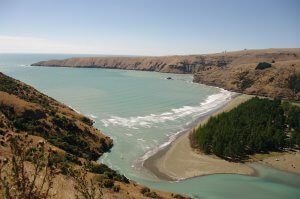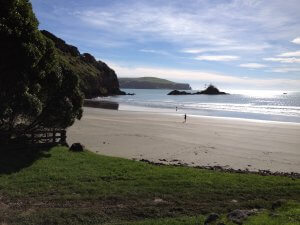Ōkeina Okains Bay & Kawatea
Ōkeina is the Māori transliteration of the name ‘Okains Bay’. While the genesis of the name ‘Okains’ is uncertain, the Māori history of the area is well known and is of immense cultural and historical importance to Ngāti Huikai (the local hapū or sub-tribe) and wider Ngāi Tahu whānui, being a place of Māori occupation and activity by Waitaha, Ngāti Māmoe and Ngāi Tahu for generations.

Little Okains Bay, also known as Kawatea, to the south of the main beach is a wāhi taonga (treasured place) and a key site in the history of the Ngāi Tahu settlement of Te Pātaka o Rakaihautu/Banks Peninsula. The groves of karaka trees at this small sheltered bay attracted the Ngāi Tahu rangatira (chief), Moki who led his expeditionary force south in the great waka, Makawhiua in the eighteenth century.

In addition to its significance in Ngāi Tahu tribal history and narratives, Kawatea (and wider Okains Bay) is of particular importance on account of the taonga Māori (Māori artifacts) discovered there – some of which are held in the collections of the Okains Bay Māori and Colonial Museum. Kawatea is publicly accessible via two walking tracks – one around the shoreline at low tide and the other via a farm track that can be accessed through the cattle yards. If in doubt, ask at the Camping Ground Office nearby.
